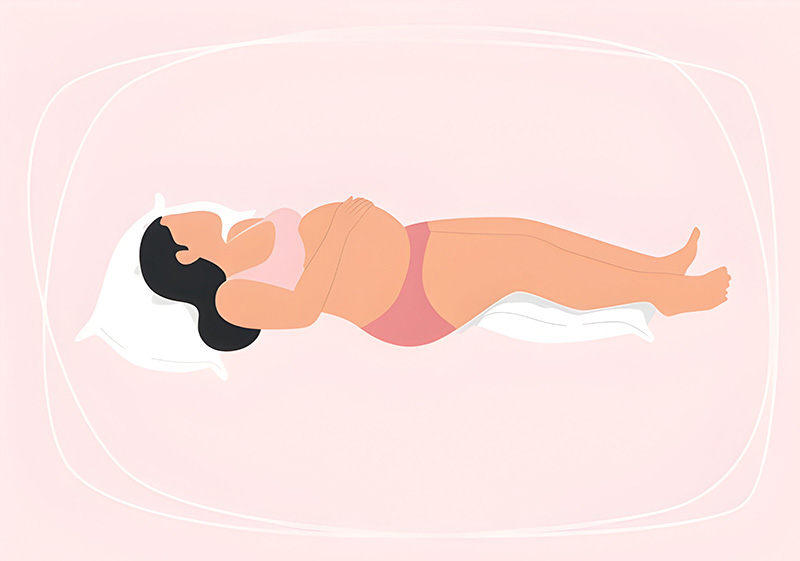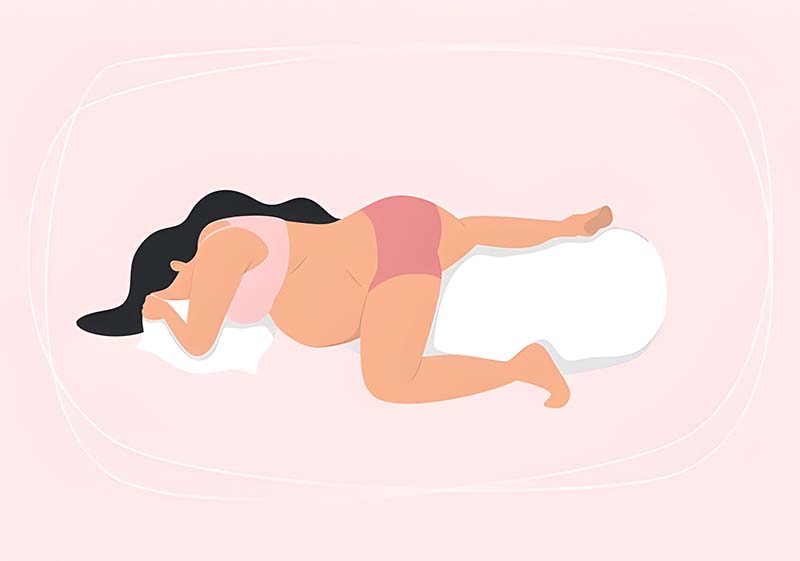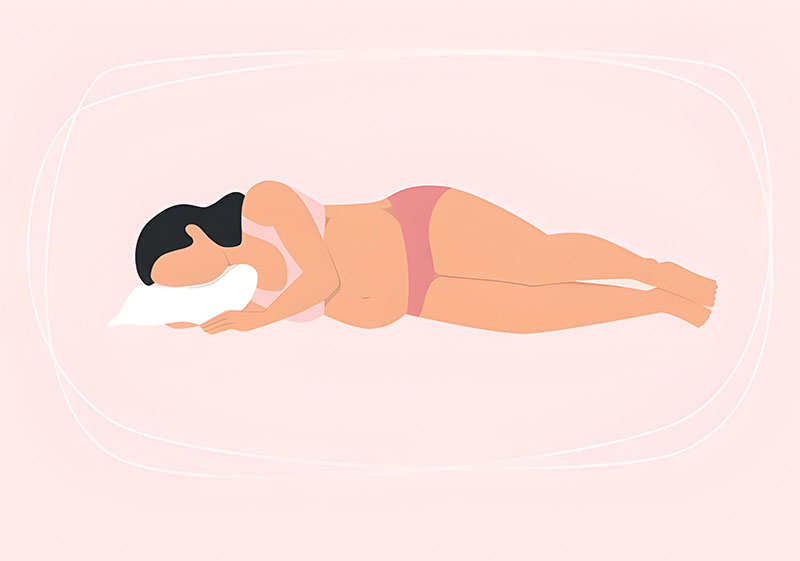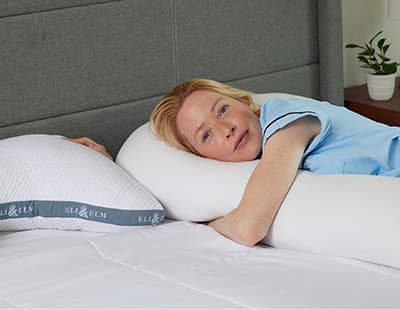Pregnancy is a magical time for a mother. The glow, joy, and feeling of becoming a mother and waiting to hold your baby for the first time make it even more remarkable. The extra care and caution that follows this period will determine the health and happiness of your child.
Now, there are several pieces of health advice given by the health expert that you follow during your pregnancy, but some we just hear from random sources, tidbits, wannabe medical experts, and quacks. In such a sensitive time, mothers tend to stress too much and do everything possible to prepare themselves for giving a healthy birth.
However, not all information is reliable, so we are here to debunk some myths about healthy sleeping positions during pregnancy.
Myth-1: Sleeping On Your Back During Pregnancy is Okay!

Well, it’s not that okay! During pregnancy, women go through a lot, they stress about their baby, and they are exhausted and overwhelmed. To care for their cub, a mother will do anything and everything. Hence, they stress themselves too much whenever they do something they shouldn’t have during pregnancy. Now, we will clear this once and for all.
Back sleeping during pregnancy isn’t as good as you thought. Sleeping on your back when you’re expecting can run some severe birthing risks. Back sleeping after 28 weeks can induce the risk of stillbirth, evidently to up to 5.8% chances. So think before anyone lets you believe that it’s not harmful.
When you sleep on your back, the entire weight of your body, including the fetus, rests on your back, which will stretch your spine out of alignment. And you know what happens when that happens? It’s all backache from there.
Recommended Sleeping Positions for Pregnant Women
| Sleeping Position | Benefits | Considerations |
|---|---|---|
| Side Sleeping |
|
|
| Back Sleeping |
|
|
| Stomach Sleeping |
|
|
| Semi-Reclined |
|
|
| Fetal Position |
|
|
Myth-2: Sleeping On Your Stomach During Pregnancy is No Problem!

Pregnancy is a magical time indeed, but what we don’t see is how uncomfortable it is for expectant mothers! The primary activities, routine, and even eating regular food can be an arduous task for them. So, with all this going on for months, one just wants to lie and relax how they feel comfortable. Some women find it very relaxing to sleep on their stomachs as it can lighten the weight of the fetus from their body by the support they feel from the bed or mattress they lie on. But as good as it may feel, it is unhealthy for you and the baby!
Sleeping on your stomach will create extra stress on your spine due to the additional weight gain during pregnancy. The back is supported, and you might experience constant back pain during pregnancy. While sleeping, your tummy and your neck remain unsupported at times. It is twisted on either side for hours, which will severely strain your neck. Apart from this, stomach sleeping might put the baby in a difficult position inside the womb.
Myth-3: Sleeping on the Right Side is Wrong for Pregnant Women

Sleeping on your left side is often called the “ideal” scenario during pregnancy. Positioning yourself on the left side of your body allows optimal blood flow from the inferior vena cava (IVC). This large vein runs parallel to your spine on the right side and carries blood to your heart and, in turn, to your baby. Sleeping on your left side also takes the pressure off your liver and kidneys. This means more room to function correctly, helping with swelling issues in your hands, ankles, and feet.
So, if the left side is ideal — should you avoid the right side? Not necessarily. That 2019 review showed equal safety when sleeping on the left and right sides. There’s a slight risk of compression issues with the IVC when you sleep on the right, but it’s mostly a matter of where you’re comfortable.
Myth-4: Pregnancy Pillows Do Nothing!
This is wrong! No, a pregnancy pillow can be comforting for pregnant women. Some expectant mothers aren’t even aware of this product. Pregnancy is a difficult time when it comes to comfort. Women struggle to find the right and relaxing resting posture and end up suffering a lot of pain during the process.
On the other hand, pregnancy pillows can reduce this discomfort to a large extent and make these nine long months feel a little bearable. Some popular pregnancy pillows proven the most effective are C-shape, L-shape, U-shape, Full-body, and many more! Pregnancy pillows also improve frequent digestive disturbances common during pregnancy, such as acid reflux and heartburn, by keeping the posture aligned while resting.
Myth-5: Any Regular Pillow Can Do The Job
Not true again! There is a reason makers are developing innovative solutions to invent specific products to serve each individual’s needs. Hence, not all pillows can do the job of a pregnancy pillow. Not only that but if you believe using more than one pillow can provide the comfort of a pregnancy pillow, you’re wrong again.
It can give rise to other issues, such as muscle strain, misalignment, and fetus dislocation. Pregnancy pillows are made for pregnant women to offer them the comfort they need. Expectant mothers need way more care and nurturing than we think, so we should do what’s best for them and the baby!
Final Thoughts
There’s a lot you may worry about during your pregnancy. Your sleep position doesn’t need to be at the top of the list. Doctors recommend resting on your right or left side to give you and your baby the optimal blood flow. Beyond that, you might try using some pillow props to get into your most comfortable position.
Soak in all the sleep you can before your baby is born. Consult your doctor if you have other questions about the best position. Being pregnant is a particular time, so don’t spend it worrying too much. Call your healthcare provider as soon as you think you’re pregnant. If you’re planning to get pregnant, see your healthcare provider before you conceive. They can give you advice based on your health history.






















